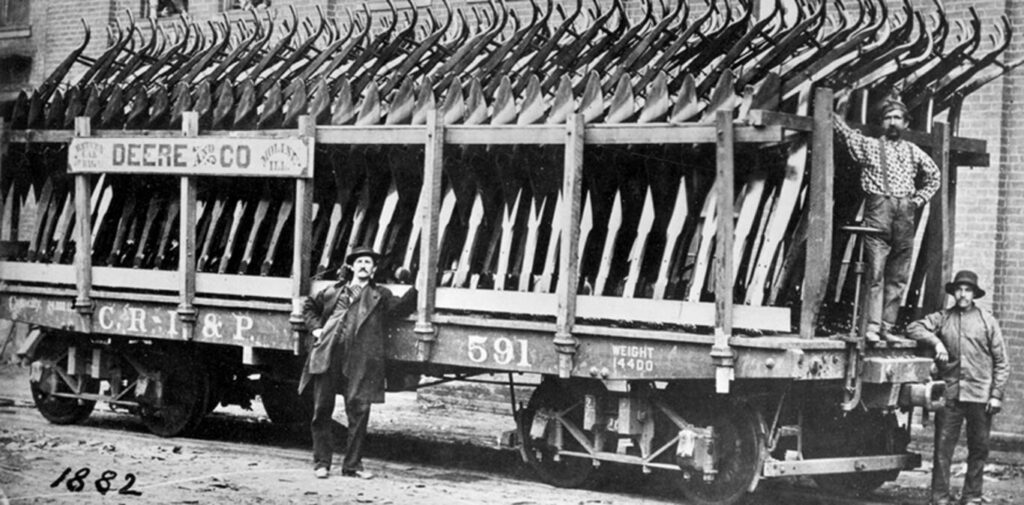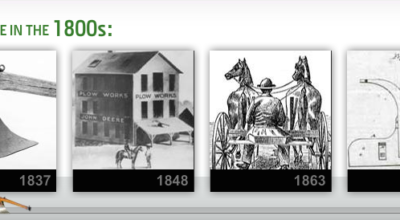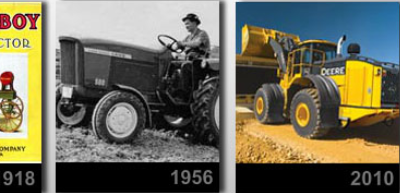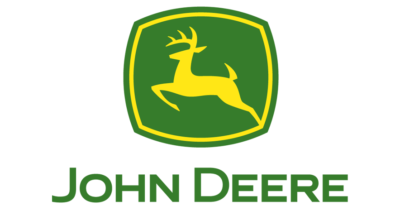Dating back to the beginning of civilization, farming has been a large source of food. As populations rose, the demand for these agricultural goods increased dramatically, putting a high demand on farmers producing them. As it became known tilled soil was more effective for seeding and growing, early forms of plows emerged. In this post, we will go back in history and explore the invention and inevitable evolution of the John Deere steel plow.

The First John Deere Steel Plow: 1837
In 1837, John Deere was a typical blacksmith turning out hay forks, horseshoes, and other essentials for life on the prairie. Then one day, a broken steel sawmill blade gave him an opportunity. He knew that days in the field were difficult for farmers near his home in Grand Detour, Illinois because they had to regularly interrupt their work to clean the sticky prairie soil off of their cast-iron plows.
He also knew that the soil would slide easily off of a highly polished steel moldboard. Steel was scarce in the area, so Deere fashioned a moldboard out of the second-hand blade. This model opened the doors to John Deere’s success in the future.
Gilpin Sulky Plow: 1875
Many variations of the original plow were sold leading up to the 1870s; an 1857 advertisement mentions nine models offered by Deere. Most were similar in design but different in size or material. The first large change in design came in 1875 when Gilpin Moore designed the first riding plow, also known as a Sulky plow. Other options were on the market at the time, but Deere’s two-wheel Sulky plow was the most popular among farmers.
New Deal Gang Plow: 1880s
In the mid-1880s, a few modifications were made to the Sulky plow, the main change being the addition of a third wheel. This model also included a “power-lift,” allowing the plow bottom to come out of the ground by simply placing one’s hand on a catch that connected to the land wheel. Variations were made in the mid-1880s, as Deere offered walking and riding plows in single-bottom to six-bottom gang versions.
The six-bottom gang versions were very heavy, requiring more power than just horses. These plows evolved to become tractor compatible, but Deere was not yet involved in tractor manufacturing.
Waterloo Boy Tractor: 1918
In 1912, John Deere was public and appeared on the New York Stock Exchange. The public availability of stock purchasing was very profitable for the Deere Company. In 1918, Deere bought the makers of the Waterloo Boy tractors, giving the company the opportunity to expand its market into the tractor operator plowing business.
The “GP” Wide-Tread: 1929
In 1929, a row-crop tractor enters the market. It is the first John Deere tractor with a tricycle front to fit between two crop rows, and rear axle wide enough so wheels can straddle two rows. This allowed farmers to use a ride-on tractor to perform with twice the width, covering two rows at once.
John Deere Model 70: 1953
In 1953, the Model 70 is launched as the largest row-crop tractor to date. Initially available with a gasoline, all-fuel, or LP-gas engine, it will become the first diesel row-crop tractor.
If you have any questions about any of the agricultural equipment offered by John Deere, you can contact your local John Deere dealer.
If you enjoyed this post or want to read others, feel free to connect with us on Facebook, Pinterest, or Twitter!


